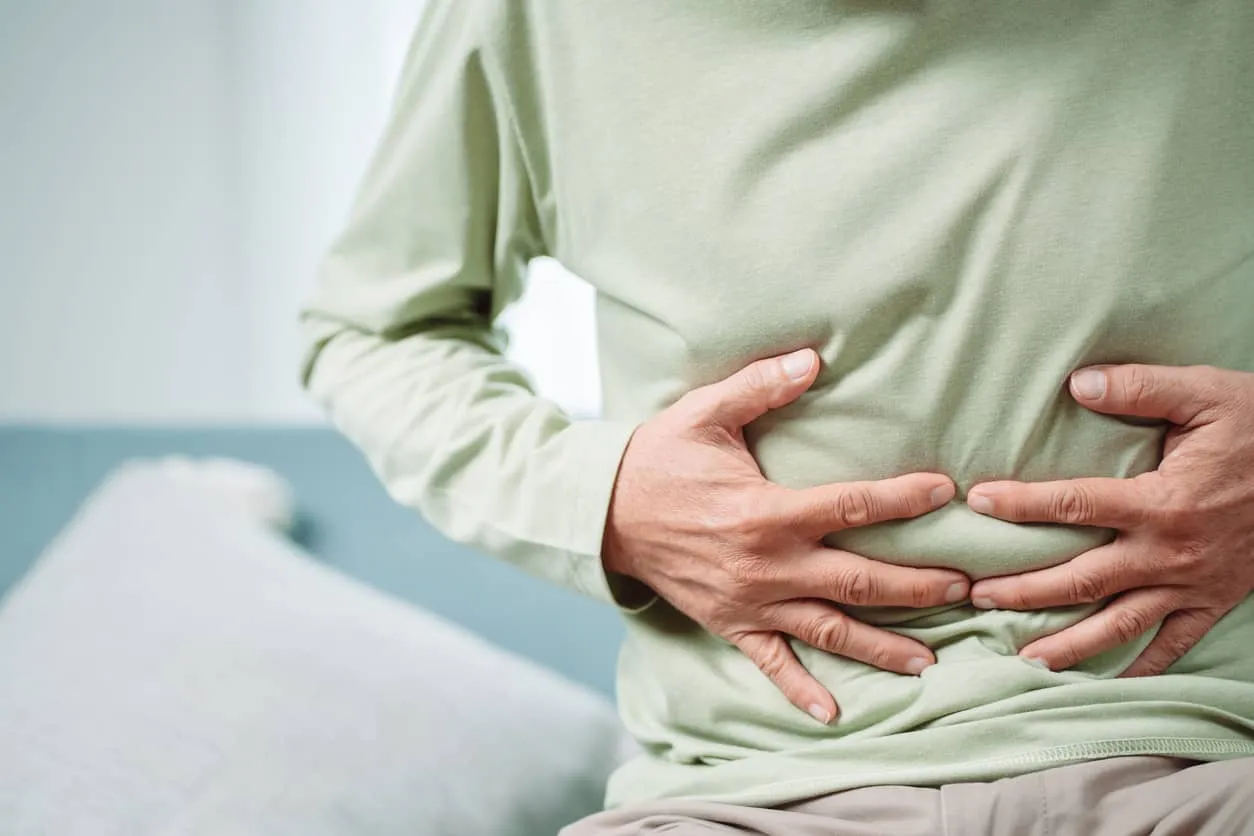Key Takeaways
- Rybelsus is a once-daily pill used to manage type 2 diabetes.
- In some cases, people take Rybelsus to lose weight.
- Foods to eat for weight loss include lean proteins, high-fiber foods like fruits, vegetables and whole grains, healthy fats, and probiotic-rich foods.
Updated by: Lacey Muinos
Rybelsus is a pill that you take once daily to manage type 2 diabetes. In some cases people take it “off-label” for weight loss, which is not FDA approved.
When you’re taking Rybelsus, choose foods that support sustainable weight loss.
This includes lean proteins, high fiber foods like fruits, vegetables, and whole-grains, as well as healthy fats and probiotic-rich foods.
Read on to learn about how Rybelsus affects the body, which foods to eat for weight loss on Rybelsus, and tips for incorporating these foods into your diet.
{{splash}}
How Rybelsus Works
Rybelsus contains the active ingredient semaglutide. It mimics the action of a hormone called glucagon-like peptide-1 (GLP-1).
GLP-1 stimulates the secretion of insulin after you eat foods containing carbohydrates.
Insulin helps sugar move from your blood into your cells to provide your body with energy.
It also prevents the levels of sugar in your blood from becoming too high.
Rybelsus also prevents your liver from producing and releasing too much sugar into your bloodstream, and slows down transit time for food leaving the stomach after a meal.
This can help you feel fuller for longer after eating, which may help with weight loss.
What is Rybelsus Used For?
GLP-1 medications like Rybelsus have been shown to effectively reduce blood sugar and A1C (a blood test that measures your average blood sugars in the past three months) in adults with type 2 diabetes when used alongside diet and exercise.
Some people taking Rybelsus also lose weight.
Foods to Eat with Rybelsus
Rybelsus should be taken on an empty stomach first thing in the morning.
It should be taken with no more than four ounces of plain water.
Once you’ve taken your pill, wait 30 minutes before eating, drinking, or taking other medications so that Rybelsus can be properly absorbed.
The best foods to eat with Rybelsus are foods that help you manage your blood sugar and foods that keep you satisfied between meals.
{{local}}
Lean Protein Sources
Lean proteins are an important part of a balanced diet for type 2 diabetes management.
They’re digested slowly, which prevents your blood sugar from spiking.
Plus, they keep you full for longer, which may help with weight loss by causing you to eat less.
Choose lean proteins to ensure you’re not consuming too much saturated fat, which can raise your levels of LDL cholesterol (bad cholesterol) and increase your risk of heart disease and stroke.
Some of the best lean proteins to include in your diet include:
- White meat poultry without skin (such as chicken and turkey).
- Fish and shellfish (such as tuna, salmon, and shrimp).
- Eggs.
- Tofu.
- Legumes (such as black beans, chickpeas, and lentils).
- Low-fat dairy products (such as yogurt and cottage cheese).
- Lean cuts of pork (such as tenderloin and loin chops).
- Lean cuts of beef (such as flank steak and top round).
While including some protein in your diet is important, it isn’t necessary to eat a high protein diet.
Some studies demonstrate that long-term high protein diets worsen insulin resistance.
By sticking to protein portions that make up one quarter of your plate, you can ensure you eat enough protein without overdoing it.
Protein powders may also be an option if you’re unable to eat enough protein at meals.
High-Fiber Vegetables and Fruits
High-fiber vegetables and fruits are an important part of a healthy diet for diabetes.
Fiber has significant health benefits for people with diabetes, including:
- Blood sugar management: The human body can’t break down and absorb fiber, so it doesn’t cause a spike in blood sugar like other carbohydrates do.
- Heart health: Certain types of fiber binds and removes cholesterol from your body, which can reduce your risk of heart disease.
- Gut health: Fiber cleans your digestive tract and keeps your bowel movements regular.
- Weight management: Fiber moves slowly through your stomach, which can keep you feeling fuller longer.
When planning your meals, make one half of your plate non-starchy vegetables, such as:
- Asparagus.
- Beans.
- Beets.
- Brussels sprouts.
- Broccoli.
- Cabbage.
- Carrots.
- Cauliflower.
- Cucumber.
- Leafy greens.
- Mushrooms.
- Onions.
- Peppers.
- Squash.
- Tomatoes.
When planning your meals, remember that fruits contain carbohydrates that may impact your blood sugar level.
However, this doesn’t mean you should avoid fruit—it’s a nutritious food group that’s loaded with essential vitamins, minerals, and fiber.
If you’re counting carbohydrates, a small piece of fruit or about half a cup of frozen or canned fruit contains about 15 grams of carbohydrates.
If you’re using the plate method, a small piece of fruit for dessert is an excellent addition to a meal containing non-starchy vegetables, a small portion of starch, and protein foods.
{{splash}}
Healthy Fats
Fat is an important part of a balanced diet for diabetes. There are four types of fat:
- Saturated fat.
- Trans fat.
- Monounsaturated fat.
- Polyunsaturated fat.
The two types of fat to include more of in your diet are monounsaturated and polyunsaturated fats.
These fats promote heart health, lower LDL cholesterol, and reduce your risk of heart disease and stroke.
Good sources of monounsaturated fat include:
- Avocado and avocado oil.
- Canola oil.
- Nuts.
- Olive oil.
- Peanut butter.
- Safflower oil.
Omega-3 and Omega-6 fatty acids are types of polyunsaturated fats.
These are essential fatty acids, meaning your body cannot produce them on its own.
Sources of Omega-3 fatty acids include:
- Oily fish (salmon, sardines, and tuna).
- Walnuts.
- Flaxseeds.
- Canola oil.
- Chia seeds.
Sources of Omega-6 fatty acids include:
- Tofu.
- Walnuts.
- Flaxseeds.
- Canola oil.
- Eggs.
- Sunflower seeds.
- Peanut butter.
Try to replace less healthy types of fat, like butter and lard, with heart-healthy fats like olive oil, avocado oil, and canola oil.
Probiotic-Rich Foods
Probiotics are live microorganisms that promote human health when consumed in adequate amounts.
While many fermented foods (sauerkraut, kimchi, kefir, kombucha, yogurt, etc.) contain live microorganisms, not all fermented foods are probiotics.
Regardless of whether they contain probiotics, eating fermented foods is associated with several health benefits, including improving lactose intolerance, preventing heart disease, preventing and managing metabolic disorders like diabetes, and preventing gut disorders.
Some fermented foods and drinks to include in your diet include:
- Probiotic yogurt (check for the words “live active cultures” on the label to ensure it contains probiotics).
- Kimchi.
- Kefir.
- Sauerkraut.
- Sour cream.
- Natto.
- Miso paste.
- Most cheeses.
- Tempeh.
- Kombucha.
Complex Carbohydrates
When choosing carbohydrate foods to include in your diet, choose complex carbohydrates more often.
These are carbohydrates that are digested slower and are less likely to cause a rapid spike in your blood sugar.
High fiber, complex carbohydrates to include in your diet include:
- Starchy vegetables (such as potatoes, winter squash, and corn).
- Fruits, especially those with the skin on.
- Legumes and pulses (such as lentils, kidney beans, black beans, and split peas).
- Whole grains (such as quinoa, bulgur, barley, oats, brown rice, farro, whole wheat pasta, and whole grain bread).
Whole grains are grains that have been minimally processed and contain fiber, as well as vitamins B and E and minerals.
According to the American Diabetes Association, at least half of your daily grain intake should be whole grains.
When reading food labels, look for the words “whole-grain” or “whole wheat” as the first ingredient.
When planning your meals using the plate method, make one quarter of your plate complex carbohydrates.
{{splash}}
What Happens if You Take Rybelsus With Food?
Rybelsus is taken on an empty stomach first thing in the morning, but what happens if you take it with a meal?
It’s unlikely to interact with food, but food can impair the absorption of Rybelsus, making it less effective.
How Long After Taking Rybelsus Can You Eat?
Rybelsus shouldn’t be taken with large amounts of food or fluids.
You can drink up to 4 ounces of water when you take the tablet first thing in the morning, but you should wait before having a snack, meal, or larger drink.
The manufacturer recommends waiting at least 30 minutes before eating or drinking.
Can You Take Rybelsus At Night?
It’s generally recommended to take Rybelsus first thing in the morning because it works best on an empty stomach.
Your stomach is emptiest in the morning, so the directions say to take it upon waking.
However, it’s technically possible to take Rybelsus at any time.
You could take Rybelsus at night if you have an empty stomach.
You would need to fast for about six hours before taking Rybelsus at night, so it may be easier to take it in the morning before you start eating.
Can You Take Rybelsus with Coffee?
Aside from 4 ounces of plain water, Rybelsus shouldn’t be taken with any food or drink.
This means your morning cup of coffee will have to wait.
You should wait about 30 minutes before consuming anything else, so you can drink coffee half an hour after taking Rybelsus.
Does Rybelsus Interact With Any Other Medications?
When taking Rybelsus, it’s important to discuss any other medications or supplements you take with your doctor or pharmacist.
Rybelsus can interact with other drugs, which can make them less effective or change the way they affect your body.
Though not an exhaustive list, Rybelsus can interact with or interfere with the absorption of the following medications:
- Insulin.
- Sulfonylureas like Glipizide (Glucotrol), Glimepiride (Amaryl), and Glyburide (Glynase).
- Meglitinides like Repaglinide and Nateglinide (Starlix)
- Levothyroxine (Synthroid).
- Propranolol (Inderal XL).
It’s mainly known to interact with medications that lower blood sugar as well as some other oral medications.
If you take any other medications, you should take them at least 30 minutes after taking Rybelsus.
You may need to discuss timing and dosage of other medications with your healthcare provider since Rybelsus is associated with some interactions.
How to Avoid Rybelsus Side Effects
Some of the most common side effects of Rybelsus include:
- Nausea.
- Stomach pain.
- Vomiting.
- Reduced appetite.
- Diarrhea.
- Constipation.
The best way to avoid Rybelsus side effects is to take it exactly as directed by your doctor.
If you experience nausea, here are some tips that may help:
- Eat bland, low-fat foods like rice, toast, and soda crackers.
- Eat foods that contain water, like broth-based soups.
- Avoid greasy and fried foods. These foods can further slow stomach emptying, which may worsen side effects.
- Avoid sweet foods.
- Drink ice-cold water.
- Eat more slowly.
- Try not to lie down after you eat.
- Step outside for some fresh air.
If you continue to experience Rybelsus side effects, talk to your doctor.
Tips for Incorporating These Foods into Your Diet
One of the best ways to incorporate these foods into your diet is the Diabetes Plate Method.
This is an easy way to portion your plate without any additional tools.
To start, find a nine-inch plate.
Then, fill half your plate with non-starchy vegetables, one quarter of your plate with protein foods, and one quarter of your plate with carbohydrate foods.
When cooking, try to use healthy fats such as olive oil and avocado oil.
To include probiotic-rich foods in your diet, aim to include one probiotic-rich food daily.
{{splash}}
Takeaway
When you’re taking Rybelsus, foods to eat for weight loss include lean proteins, high-fiber fruits and vegetables, healthy fats, complex carbohydrates, and probiotic-rich foods.
By portioning your plate using the Diabetes Plate Method and incorporating these foods daily, you may find that your blood sugars are better managed and your weight loss efforts enhanced.
How a Dietitian Can Help
There’s usually a learning curve when starting any new medication, including Rybelsus.
Dietitians who specialize in diabetes and weight loss drugs can help you navigate this part of your health journey.
A Nourish dietitian can help you set attainable goals and develop a personalized, sustainable plan.
You’ll receive a customized eating plan and ongoing support, which can take out some of the guesswork when starting a new medication.
Find a dietitian near you that accepts insurance using Nourish.
{{splash}}
Do you have any of these insurances?
Why Join Nourish's RD Network






Frequently Asked Questions
Rybelsus should be taken on an empty stomach with no more than four ounces of plain water.
You can eat and drink 30 minutes after taking Rybelsus.
The best way to increase the absorption of Rybelsus is to take it on an empty stomach with no more than four ounces of plain water.
This allows Rybelsus to rest on the stomach lining undisturbed, which increases its absorption.
The best foods to eat while taking semaglutide are foods that help keep your blood sugar from going too high and keep you full between meals, which may help with weight loss.
This includes lean proteins, high fiber foods such as fruits, vegetables and whole grains, healthy fats, and probiotic-rich foods.




















.jpg)




.avif)


























.avif)













.avif)
.avif)









.avif)


.avif)






























